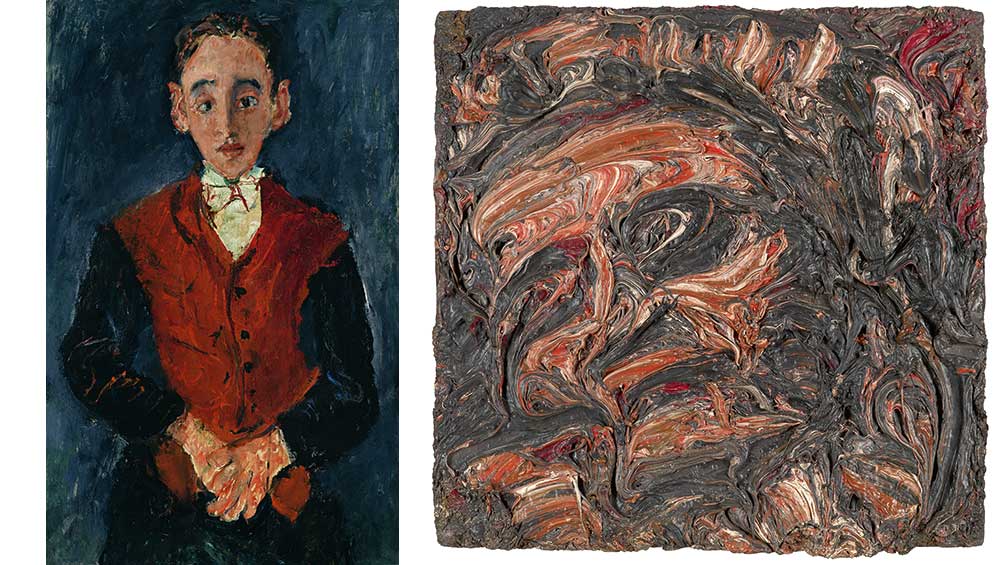
Left: Chaim Soutine, Le valet de chambre, c1927. Oil on canvas. The Lewis Collection. Right: Leon Kossoff, Head of Seedo, 1964. Property of the Roden Family. Copyright Leon Kossoff Estate.
Hastings Contemporary
1 April – 24 September 2023
by BETH WILLIAMSON
Soutine/Kossoff is a curious show, but in a good way. A collection of rare and important international loans have been brought together in a provincial seaside gallery in southern England, linking two painters – the Belarus-born Chaïm Soutine (1893-1943) and the British artist Leon Kossoff (1926-2019), who came from different generations and lived in quite different worlds. There are landscapes and portraits. Soutine is probably best known for his evocative portraits of young working people – a valet, a baker, a chef – although his accomplished landscapes of 1920s France include Cagnes Landscape with Tree (c1925-26) and Paysage aux Cyprès (c1922) and his other important paintings of Céret. Kossoff, on the other hand, is famed for his London landscapes – like Frank Auerbach, the building sites, railways and gardens of north London were his subject. There are Kossoff’s powerful portraits too – lashed thick with paint and the sheer effort it must have taken to work that much medium into the picture to produce often monumental works.
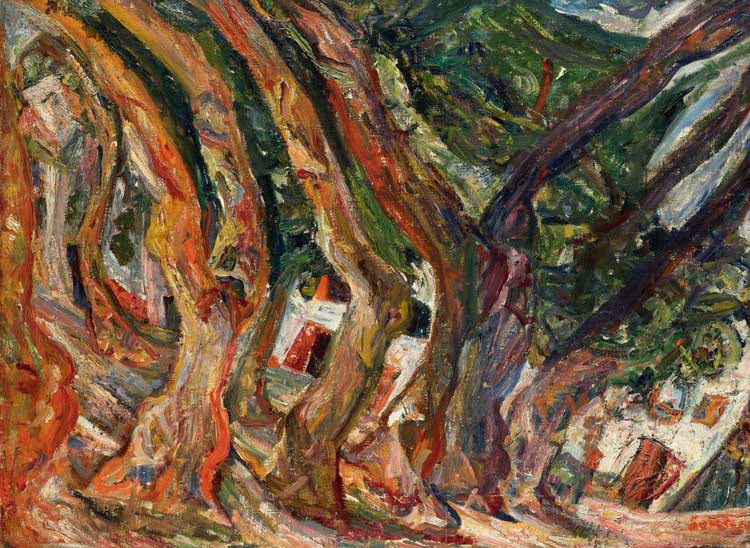
Chaim Soutine, Les Platanes a Ceret, c1920. Oil on canvas. Collection Diethard Leopold. Image courtesy of Sotheby's.
Everywhere in this exhibition there is colour, gesture and expression. Shapes twist, whether they are human limbs or the branches of trees. Vigorous brush strokes attack canvases with passion. The exhibition’s guest curator, James Russell, explains that, in the 50s, Soutine’s work was shown in New York and London, and he became something of a hero to artists such as Francis Bacon, Auerbach and Kossoff. They recognised the passion, energy and freedom in his work, as well as a feeling for, or experience of, place. Soutine didn’t draw, says Russell. Instead, he would stare for hours. He haunted the Louvre in the same way that Kossoff haunted the National Gallery. Kossoff painted, scraped and repeated ad infinitum. In a sense, he rehearsed his paintings in this way but worked at a tempo, leaving trails of paint across their surface like energy as a biproduct. His portrait painting was spontaneous but painfully slow as he focused on his experience and feeling to capture an instant, a moment, nothing more. Despite the weighty impasto, the figures feel alive, partly because the paint still seems to be flowing in emotive gestures across a shoulder blade, or along the side of a cheekbone or flesh of a hip.
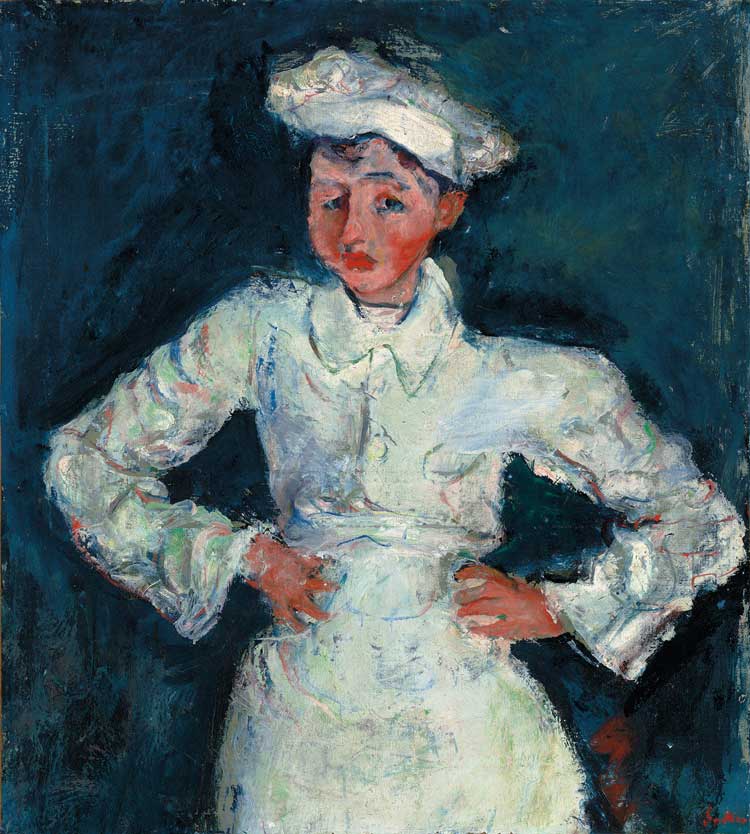
Chaim Soutine, The Little Pastry Cook, c1927. Oil on canvas. Private Collection Photo: © Christie's Images/Bridgeman Images.
So far, none of this is really new. What is new, is just how this show has been put together, and the fresh insights that brings. Soutine and Kossoff are both, in different ways, what we might call painter’s painters. With that kind of reputation and legacy, setting their work in direct comparison would have been difficult and perhaps not entirely productive. What Russell has done instead is to shift our gaze askance. The work of each artist is set in adjoining gallery spaces, each with a different tone and focus. So, we begin with Soutine’s arresting Céret paintings of the 20s, mentioned earlier, followed by a space devoted to Kossoff in London where his railway landscapes and city building sites of the 60s dominate. Upstairs, Kossoff’s London landscapes continue before relinquishing space to Soutine’s intense, sometimes painful, portraits.
,-1942.jpg)
Chaim Soutine, Maternité (or Pieta), 1942. Oil on canvas. Property of a European Collector. Photo: Todd-White Art Photography.
There is the sorrowful mother of Maternité (or Pietà) (c1942), the feigned boldness of the young boy in Portrait du Garçon en Bleu (c1928), or the introspective gaze of Jeune Servante (c1933) with her piercing blue eyes. In another space, Kossoff’s portraits are much more muscular than Soutine’s. Bold portraits such as Kossoff’s Nude on a Red Bed (1972) or Seated Woman (1957) convey the power and the complexity of his relationship with his sitters through the materiality of paint. The small scale of Portrait of Chaim (1988), a portrait of his brother following their father’s death, and Small Head of Rosalind, No 1 (1970), a portrait of his wife, is less usual for Kossoff and intensifies his close focus and tenderness for these subjects.
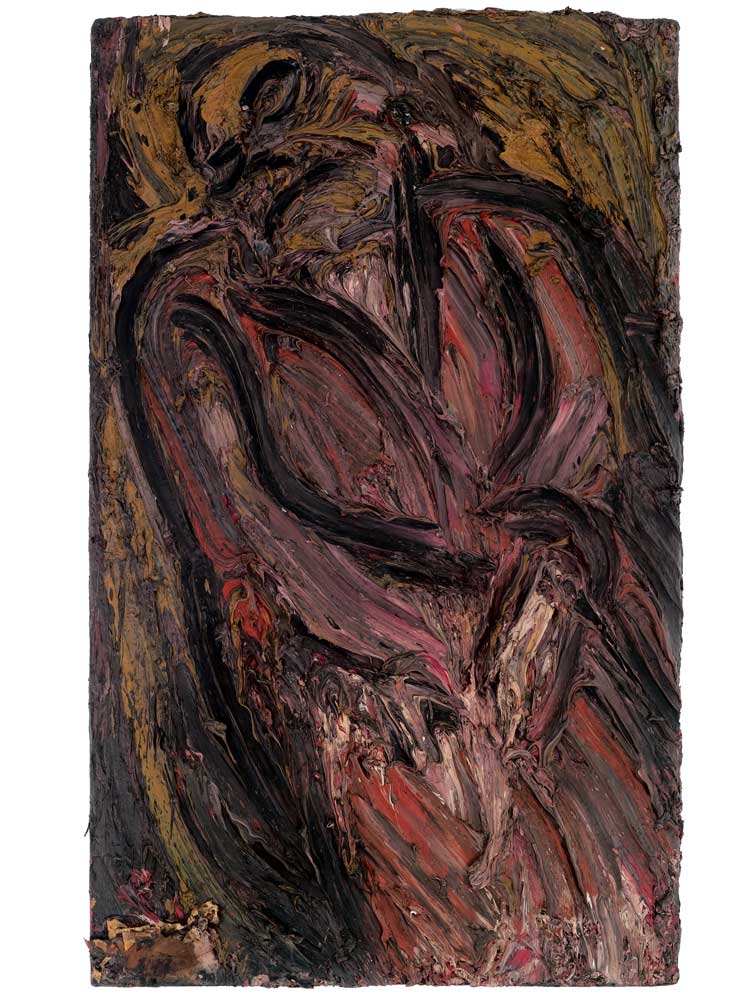
Leon Kossoff, Seated Woman, 1957. Oil on board, 155 x 93 cm. Copyright Leon Kossoff Estate.
This strategy of having the two painters in one show but in separate spaces seems to me to be the perfect foil to the main risk of such two-person shows – that one painter always inevitably comes out weaker than the other. Yet in this exhibition there is no winner and loser. What would be the value in that? Both painters, to my mind, come out of it equally. Putting that bit of distance between them by using focused adjoining spaces rather than forcing any direct one-to-one comparisons allows each artist to be seen on his own terms. It makes sense as the two men never met. It also allows visitors space to wander back and forth, to make their own comparisons and draw their own conclusions, maybe even wonder about where these two artists might sit in relation to others in the long history of painting. Both Soutine and Kossoff were interested in art history and had a shared respect for the history of European painting, seeking to preserve it while simultaneously moving history forward. Neither artist had any interest in following artistic trends or fashions, but both demonstrated a deep humanity in their painting which is perhaps what they share most of all.
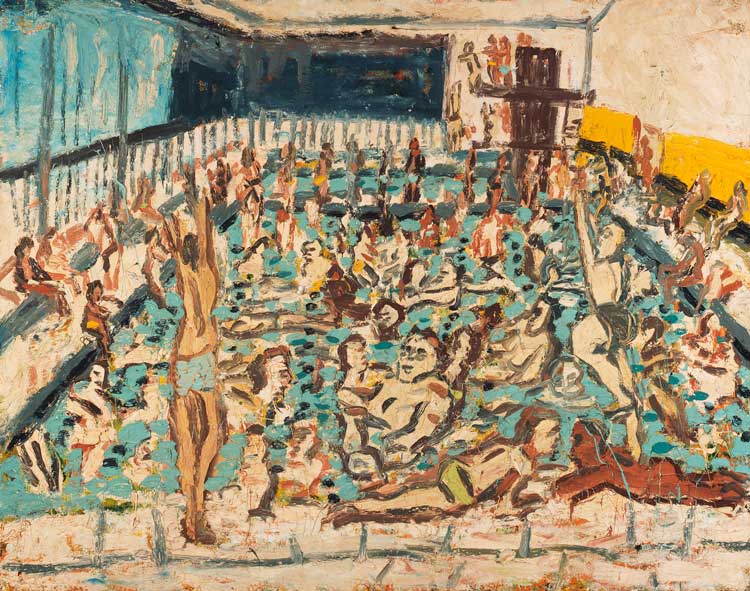
Leon Kossoff, Children's Swimming Pool, Autumn Afternoon,1971. Oil paint on board, 168 × 214 cm. © Tate.
The single most arresting picture in this exhibition, for me at least, is neither portrait nor landscape. It is Kossoff’s swimming pool scene in Children’s Swimming Pool, Autumn Afternoon (1971). It is this painting that transcends the categories of landscape or portrait and instead brings the happy sound of a children’s afternoon swim to echo around the walls of Hastings Contemporary. The heavy skies and strong winds outside the building the day I visited have nothing on Kossoff’s joyous scene of children swimming, playing, laughing, shouting, sharing in an enjoyable experience. The sheer sense of life being lived to the full, of exploring all the senses in a raucous happy fashion brings a smile to the face of most visitors, invites a consideration of the parallels with the elements outside and sends people home with a spring in their step, determined to grab life while they can. It’s a joy.